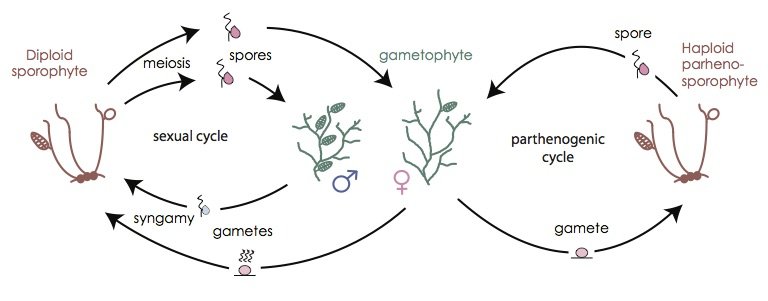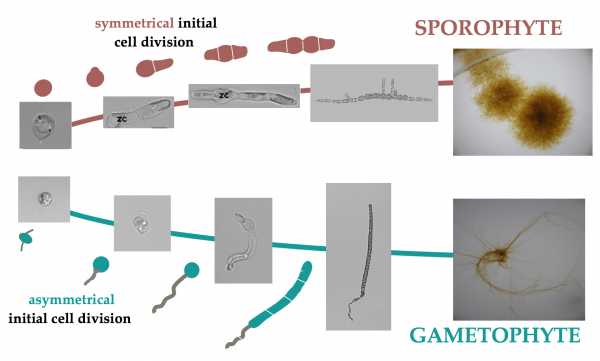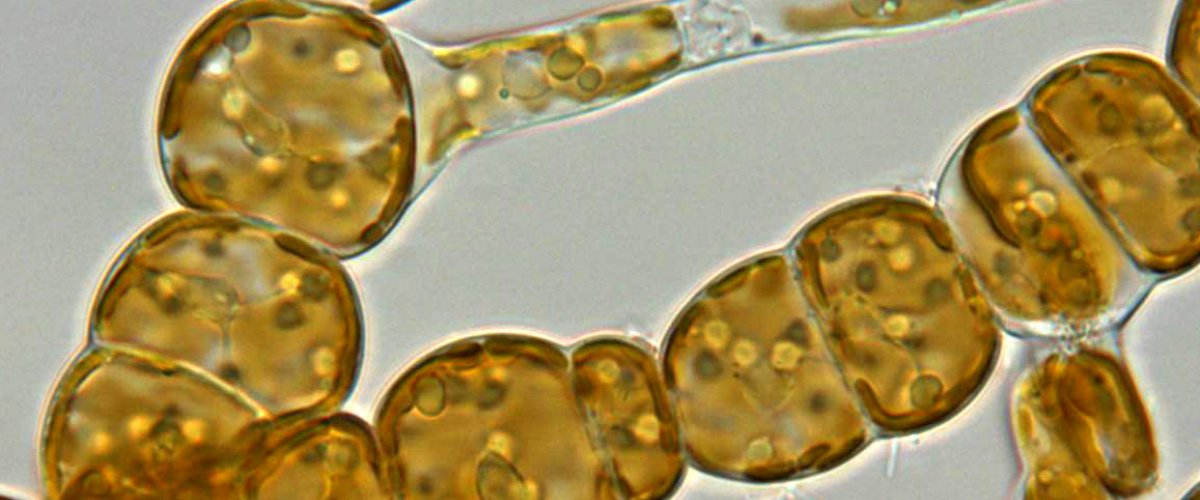Genetic control of brown algal life cycles
Many algae have life cycles involve alternation between two distinct stages, a spore-producing sporophyte and a gamete-producing gametophyte (life cycles of this type are called haploid-diplontic).
In general, the spores develop directly into the next stage of the life cycle (gametophytes) whereas the role of a gamete is to fuse with a gamete of the opposite sex to form a zygote (which then continues the life cycle by developing into a sporophyte).
The haploid-diplontic life cycle of Ectocarpus

We are using a genetic approach to investigate how these developmental processes are regulated during the life cycle of the filamentous brown alga Ectocarpus sp.
The sporophyte and gametophyte stages often look very different. When this is the case, two different developmental programs need to be implemented at the appropriate stages of the life cycle.
DEVELOPMENT OF THE SPOROPHYTE AND GAMETOPHYTE GENERATIONS OF ECTOCARPUS

Current work aims to identify and characterise major life cycle regulators and to characterise developmental processes downstream of these regulators during the sporophyte and gametophyte generations of the life cycle.
The ouroboros (Coelho et al. 2010) and samsara mutants exhibit complete conversion of the sporophyte generation into a gametophyte. The genes, which encode major life cycle regulators are currently being characterised.
One of the characteristics that distinguish sporophytes from gametophytes is the production of an extensive system of basal filaments before the emergence of the apical filaments that carry the sexual structures. Sporophytes carrying the immediate upright mutation fail to deploy this extensive basal system but there is no phenotype during the gametophyte generation (Peters et al., 2008), indicating that IMMEDIATE UPRIGHT is part of a developmental pathway that arose specifically in the sporophyte. The IMMEDIATE UPRIGHT gene is a member of a large, rapidly evolving family that exhibits an unusual distribution across the eukaryotic tree, suggestive of horizontal gene transfer events (Macaisne et al. 2017).








